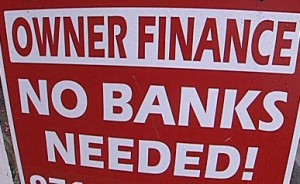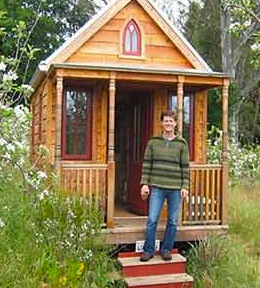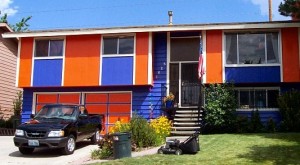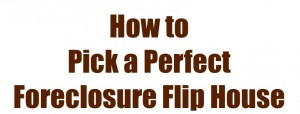How long will this wave of foreclosures last?
And what’s next?
Our foreclosure market is WAY different than it was just a few years ago. Back in 2009-2010, there were so many good deals, it wasn’t possible to buy them all.
The properties we did buy all had nice fat profit margins. New houses, in good condition… easy to clean and flip.
We’ve definitely seen a shift since those “good ole’ days”. The number of auctions has plummeted, while prices have shot up. The banks have gotten better at calculating a realistic net price, there is more competition… in short we have much thinner deals.
So flipping foreclosures is tougher than it was.
Banks still like to get rid of crappy houses. The older houses, in rough shape, in marginal neighborhoods, with huge repair bills…. the banks still don’t want those houses. Especially the occupied ones. These are the steepest discounts at the foreclosure auction.
The problem is these older houses are a real bear to flip. They sit on the market, competing with cheap newer houses, in nicer neighborhoods, at similar price ranges. And they sit… and sit…
So what can an investor do with these rougher houses?
Sell them with owner financing. If the seller is willing to take a down payment and a note for the balance… even small, dumpy, older houses sell quickly… and for top dollar.
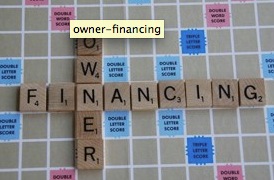 While there are a ton of available houses out there, how many work for someone with bad credit? There are a lot of potential buyers who can afford a monthly payment but simply can’t qualify for a bank loan.
While there are a ton of available houses out there, how many work for someone with bad credit? There are a lot of potential buyers who can afford a monthly payment but simply can’t qualify for a bank loan.
Sell to these buyers.
The good news is that flipping with seller-carry financing is quick and easy. And (check with your accountant first), you can potentially save income taxes with an installment sale versus an outright sale.
The bad news is that it takes a lot of cash…. cash that might be better deployed buying flip houses. Cash that will be tied up for years. Cash you won’t see for a while.
But the long term return on owner financed houses can be a great wealth builder over time. It’s a solid source of passive income. While the flipper has to keep buying and selling to make money, the owner finance seller collects a monthly check with no additional work.
 Here are some tips on making owner finance work:
Here are some tips on making owner finance work:
1. Have cash
Owner finance is not a great “zero-down” investment strategy. It works a lot better for the cash-heavy investor. If you have a mortgage on the property, you need to pay that off before you can convey title to your new buyer and take back seller financing. If you have money partners for your flipping deals, you have a high chance of conflict when you suddenly switch to a plan that ties up their cash.
Selling with financing requires you to “take cash out of the game”… for years. You are locking in a set return… but passing up on other potential deals. There are much better opportunities out there for investors with a shaky war-chest. Smaller investors will usually make a higher return focusing on straight flipping instead of owner financing.
 2. Increase your Rehab Budget
2. Increase your Rehab Budget
While we are talking about cash…. plan on spending a LOT of it. The houses that give the best owner finance return are not the big, new, clean houses that just need a little spit and polish– those are still your best flipping opportunities.
The best house for owner finance is the small, cheap, dumpy house that you pick up for a song. They yield a much stronger ROI. However, the reason they are so cheap at the foreclosure auction is the bank has determined they need too much work to bother with them. So budget your rehab accordingly.
On average, we spend at least twice as much on owner finance houses as we do on flip houses. The rehab has to be perfect… not just look perfect… because if a problem shows up a few years down the road, your owner finance buyer might walk from the mortgage payment. And your owner finance buyer is putting most, if not all, of their savings into buying the home… leaving them no safety net to fix things that break when they move in.
3. Organize your business
Collecting checks is passive, right? Well…. not exactly.
- You still have to hound late payers, just like a landlord.
- You must check they are paying property taxes on time.
- You must contact them if insurance is cancelled.
- You will eventually have to foreclose on a deadbeat.
In addition, the IRS requires you to send Form 1098, showing the interest they have paid on the mortgage… which means you have to account for principal reduction and interest separately by using amortization schedules. Owner financing is going to require more accounting and organization than flipping.
4. Get Skin in the Game
The single biggest key to owner financing is to make sure the buyer has “skin in the game”. The down payment needs to be enough to cause the buyer significant pain if they walk from the house. You always want it to be less painful for them to pay you than for you to have to take the house back.
The more expensive the house, the smaller percentage you may accept as a down payment. But generally, we like at least 10% down from an owner finance buyer. More is better.
 5. Higher Price, Lower Rate
5. Higher Price, Lower Rate
Buyers of owner-financed houses usually just care about three things: the down-stroke, the monthly payment, and the rate. Unlike other buyers, they are generally unconcerned with the sales price of the home.
While they make the purchase decision on what they can afford– not the interest rate– most buyers will take offense if your interest rate is more than they expect. They have seen enough 3.79% rates advertised (for good credit), that they don’t want to pay too much more than that.
So if you offer a nice low interest rate (5-6%), you can sell the house for more… and still keep the monthly payment affordable. You may say “but I can’t make 6%”! Remember… your ROI is MUCH higher… because your Return on Investment is based on the cash you have in the deal, while the note is going to be for much more than that.
 6. What do Home Buyers want?
6. What do Home Buyers want?
With most foreclosure flips, you need to make the house perfect. The buyer is expecting to buy the nicest house in town at the cheapest possible price.
Owner finance buyers are a lot less picky. They have a lot fewer opportunities to buy houses with owner financing than they would with cash or a bank loan. They know that. So the owner finance buyer is willing to overlook faults other buyers would not.
That said, the owner finance buyer wants all the major systems of the home to work. They are usually giving you all they have as a down payment, and they can’t afford to replace a roof, AC, or wiring. So include replacement or rehab of these items in your budget. Even a marginal roof that might pass a home inspector’s report could derail your owner finance sale.
7. What do Note Buyers want?
Eventually you may want to cash out. You may want to sell the income stream for a cash pay-off. Note buyers love to buy seasoned, documented, discounted notes… as long as the terms of the note match what they are looking for.
Balloons, pre-payment penalties, terms…. these are all variables. There are arguments for and against every variation. You want to set up your notes to attract note buyers, even if you have no current intention of cashing out. Just keeps more options available.
So find out who in your area buys notes. Ask them what they are looking for in note terms. Unless you have strong preferences, you may as well create a note that is easy to sell if you need to in the future.
There are plenty of people advertising to buy notes on a national basis. But in my experience, you will get the best price from local buyers. National buyers who are unfamiliar with your local market will insist on a much steeper discount to protect them from a lack of local knowledge.
Got any Owner Finance tips? Please leave a COMMENT or share this post!


